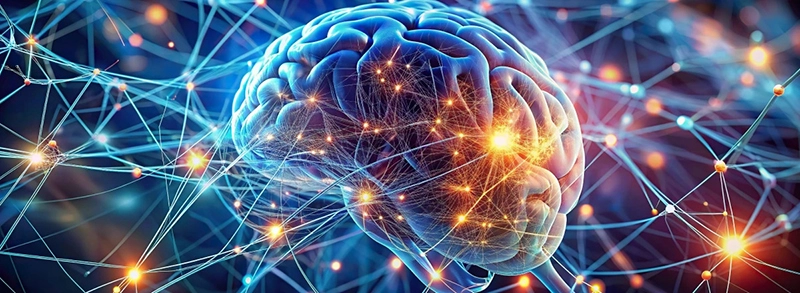During the Search 'n Stuff Conference held in Antalya, I had the opportunity to present on the integration of neuropsychology into product management—an approach that is gaining traction in the tech world. The conference brought together thought leaders from around the globe to explore how insights into user behavior can drive innovation.
At SESTEK, we are already incorporating neuropsychological principles into our product design strategies to create more intuitive and user-centered experiences. SESTEK, with AI-powered solutions and market-leading speech recognition accuracy for call centers, is committed to harnessing the latest scientific advancements to shape the future of product management.
Neuropsychology, the study of how the brain influences behavior, provides valuable insights into how users interact with digital products. By leveraging these insights, we can go beyond traditional product management methods and build solutions that align with the natural cognitive processes of our users, making their interactions smoother and more intuitive.
What is Neuropsychology and Why Is It Important in Product Management?

Neuropsychology is the study of how the brain functions and how it affects our cognitive processes, behaviors, and decision-making. For product managers, it opens a deeper understanding of human-machine interaction (HMI) and user behavior, going beyond surface-level analysis of clicks and page views.
Why does it matter? Because it’s essential. By integrating neuropsychological insights, product managers can design experiences that resonate with users on a deeper, intrinsic level, leading to improved usability and higher satisfaction.
Optimizing UX with Neuropsychological Tools
In product management, the UX design process often relies on explicit measurements such as surveys and feedback forms. However, these traditional methods may not always capture users' subconscious thoughts or behaviors. This is where neuropsychological tools come into play.
Techniques like heatmaps, eye-tracking, and even more advanced technologies such as EEG (electroencephalogram) and fMRI (functional magnetic resonance imaging) allow us to tap into users' subconscious reactions to different stimuli within the product.

For example, a heatmap can reveal which parts of a page naturally draw users' attention, highlighting the areas where they feel most comfortable navigating. This implicit measurement technique can significantly enhance the design process by allowing product managers to optimize interfaces in ways that align with users' cognitive patterns.
Behavioral Insights for User-Centric Strategies
Neuropsychology also provides insight into user behavior that can directly shape user-centric product strategies. Some of the key subconscious processes that influence decision-making include:
- Default Bias: Users tend to stick with pre-set options because it requires less mental effort. This can be leveraged in product design to encourage user choices that align with business goals.
- Loss Aversion: People fear losses more than they value gains, a principle that can guide the design of features that subtly highlight the risks of inaction, nudging users towards conversion.
Understanding these behavioral principles helps product managers tailor strategies that meet users where they are cognitively, leading to smoother, more effective user journeys.
Improving Decision-Making with Neuropsychology
Decision-making is a core aspect of user behavior, and neuropsychology helps product managers understand the mechanisms behind it. Some key phenomena to consider include:
- Choice Overload: When presented with too many options, users may struggle to make decisions or even abandon the process altogether. Streamlining choices can reduce cognitive load and enhance user satisfaction.
- Framing Effect: How options are presented affects decision-making. By strategically framing product features or benefits, product managers can guide users toward more desirable outcomes.
- Emotions: Emotional states significantly influence decision-making. Neuropsychology reveals how emotions such as fear, excitement, or happiness can impact user engagement and product interactions. Leveraging emotional triggers in design can lead to stronger user connections and brand loyalty.

User-Centered Design Backed by Neuropsychology
The goal of integrating neuropsychology into product management is to create products that are intuitive, easy to use, and designed with the user in mind. Some key principles backed by neuropsychology that drive this are:
- Load Theory: This theory emphasizes the need to minimize cognitive load in user interfaces, ensuring that tasks are easy to perform without overwhelming the user with excessive information or options.
- Hick’s Law: Hick’s Law states that the time it takes to decide increases with the number of choices. By simplifying interfaces and minimizing decision points, product managers can help users reach their goals faster.
- Fitts’ Law: Fitts’ Law predicts the time it takes to point to a target based on its size and distance. In UI design, this law helps ensure that key elements, such as buttons or navigation links, are optimally positioned for quick access, improving usability.
Conclusion
Shaping the Future of Product Management
Neuropsychology offers a powerful toolkit for product managers, enabling them to go beyond surface-level design principles and tap into the core of user behavior. By understanding how the brain processes information, makes decisions, and reacts to stimuli, product teams can create intuitive, user-friendly products that resonate deeply with their audiences.
At SESTEK, we are constantly evolving our product strategies to incorporate these groundbreaking insights, ensuring that we not only meet but exceed the expectations of our users. Neuropsychology is a key to unlocking the future of product management, shaping designs that are as smart as they are effective.
Author: Berkay Vuran, Senior Product Analyst









